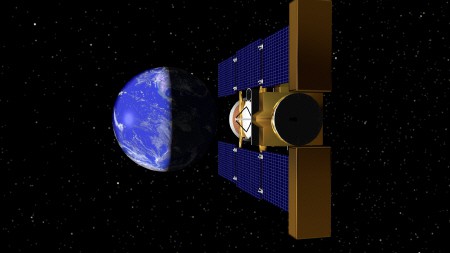Space scientists around the world are eagerly awaiting the arrival of samples from NASA's Stardust mission, which successfully returned a small capsule of material from comet Wild 2 on Sunday 15 January. The capsule landed gently in the Utah desert in the US after being dropped by the craft as it flew by the Earth. It was then whisked off by a helicopter recovery team to a nearby military airbase. The small specks of dust in the capsule will now be extracted and sent to researchers around the world. The mission should shed valuable light on the chemical building blocks of comets, our Solar System and even life itself.

Stardust is the first mission since Apollo to return extraterrestrial material to Earth. Launched in February 1999, it captured tiny fragments from the dust cloud and tail of comet Wild 2 in January 2004 as it approached to within 250 km of the comet. The particles were collected by trapping them in a “butterfly net” collector smeared with an aerogel – a light, foamy glass consisting of 99.9% air that is the least dense solid known.
After being captured, the sample was locked in a capsule that was only released by the Stardust craft when it flew past the Earth. Although the sample is small – a few thousand particles weighing about 1 milligram in all – it represents the only sample of extraterrestrial material for which astronomers know the source. The craft also collected samples of inter-planetary dust at various points on its seven-year journey.
“Comets originate from the outer solar system and therefore the Stardust samples are unique,” says Ian Franchi, a planetary scientist at the Open University (OU) in the UK. “They formed early and have remained largely unchanged since, offering a unique insight into the materials that formed the solar system, including the complex organic molecules that may have had a role in the development of life on this planet and elsewhere.” Franchi’s team is expected to be one of the first to analyze the samples.
The samples will now be examined by groups worldwide using a range of instruments, such as electron microscopes, ion microprobes, and laser-probe mass spectrometers that will analyze the particles down to the atomic scale. “This will provide a depth and detail of knowledge that cannot be obtained from remote observation and analysis,” says Simon Green, another planetary scientist at the OU.
There are even plans to set up an online virtual microscope, pioneered by the University of California at Berkeley to help with the research. Dubbed Stardust@home, it will allow anyone with an Internet connection to sift through the anticipated 1.5 million aerogel images to look for dust tracks — trails left by particles when the burrow through the aerogel. Once the tracks are found, researchers will then be able to find the particles that lie at the end of the track.
However, the detailed analysis is likely to last many years and will involve combining data from many different investigators. According to Green, the main difficulties will be in extracting and manipulating the tiny particles from the aerogel, particularly if the captured dust is fluffy and has a low density.



